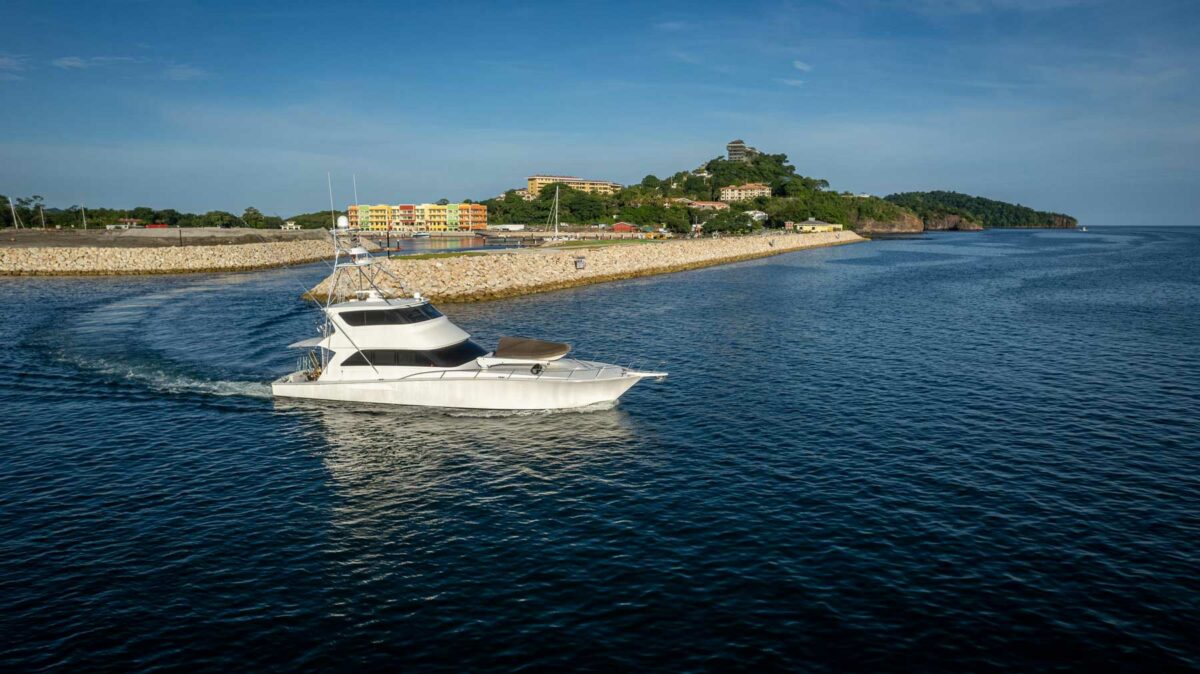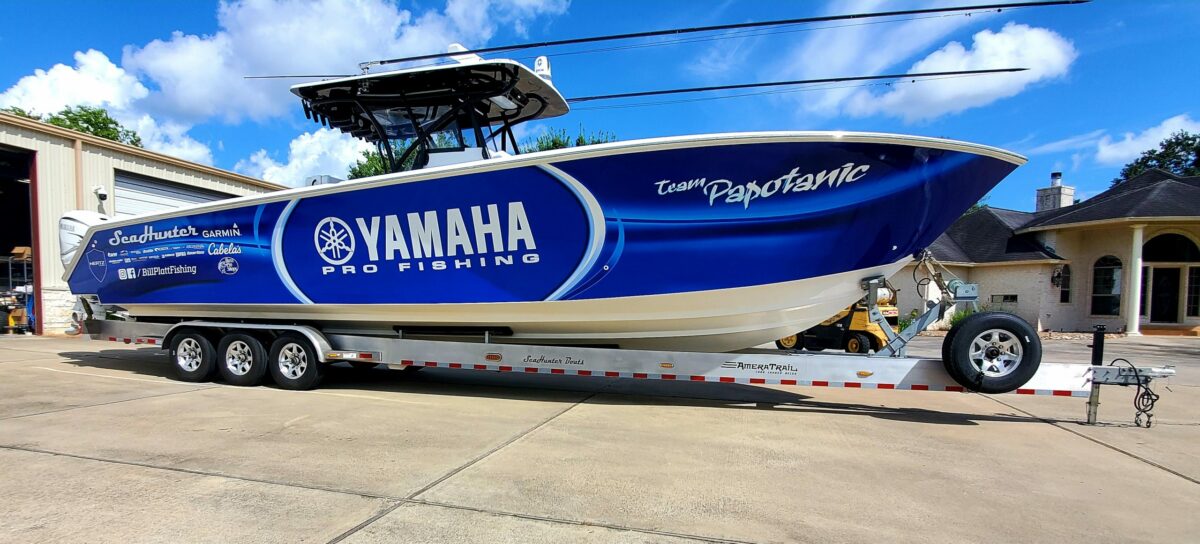Table of Contents
Many domestic destinations offer world-class angling opportunities relatively close to home, but traveling to remote and exotic locales has become significantly safer and simpler over the last few decades. Nowadays, it’s rather commonplace to visit fisheries and coastlines that were once uncharted and unwelcoming. Regardless of your desired level of adventure, diligent planning is essential in the optimization of safe and efficient travel at sea.
Ocean City, Maryland
When the world’s richest marlin tournament and largest dock party got together for a night of debauchery, Ocean City was born. Not to be confused with the beach boardwalk town of the same name in New Jersey, Ocean City, Maryland, is a quintessential eastern shore community and iconic summer destination on the Delmarva Peninsula. Each August, this tiny seaside community swells to over double its size as anglers from around the world gather for a shot at the multimillion-dollar purse at the White Marlin Open. Last year, a 79.5-pound white marlin caught by Tommy Hinkle earned Fish Whistle a $1,504,720 payday.
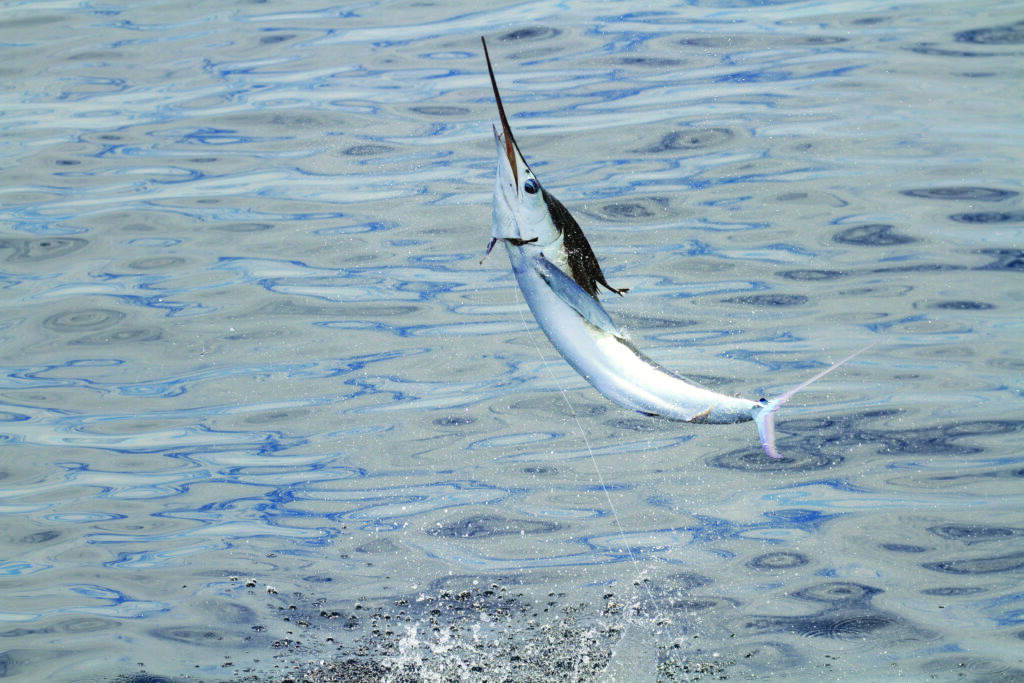
Offshore and Inshore
This year, coronavirus or not, tournament organizers expect record-breaking participation. The last few seasons the number of white marlin making an appearance at the offshore canyons has been staggering. Anglers heading north toward the Wilmington Canyon, south to the Washington Canyon and east to the Baltimore Canyon are often overwhelmed by the incredible numbers of billfish and game fish. Double-digit days on whites are not uncommon, and there are also some mighty big blue marlin shadowing those tuna schools.
Ocean City’s greatest attraction may very well be the White Marlin Open, but if some of your guests aren’t hip on running 60-plus miles offshore, inshore opportunities abound with bluefish, striped bass and flounder. Additionally, the partyboat fleet, boardwalk, arcades, shopping and clean beaches make certain there’s something to keep everyone happy. Drinking an orange crush at the Reel Inn dock bar is a rite of passage, but most visitors choose short-term docking at Sunset Marina. Just a quarter mile from the Atlantic Ocean, this full-service marina offers numerous amenities including two pools, a fitness center and laundry facilities.

Pirate’s Cove, North Carolina
Conveniently located on the Outer Banks of North Carolina, Pirate’s Cove Marina emerged from a Manteo cow pasture over 30 years ago when Allan “Big Al” Foreman began cutting the canals that would eventually shape the tight-knit community. Heather Maxwell is the longstanding director of the Pirate’s Cove Billfish Tournament and has seen the small fishing village come together and embrace the idea
of a residential and marina project centered around the offshore fishing lifestyle.
“Our first tournament out of Pirate’s Cove was in 1983,” says Foreman. “At that time the marina was complete, but there were only about 10 or 15 houses and just a few condos. Luckily, when Glenn Futrell came into the picture, he limited the number of houses and condos, but grew the project very meticulously. The Outer Banks are a beautiful and special place, and while it can be busy, it is not built up. There’s a reason the area is home to many of the finest boat builders in the country, and it’s because there’s always something to catch.”
Pirate’s Cove Marina is approximately eight miles inside and north of Oregon Inlet, accessible via a deep and well-marked channel. The full-service marina with 195 slips provides reasonable dockage rates, with numerous on-site amenities catering to traveling fishermen.
Destin, Florida
Coined the “World’s Luckiest Fishing Village,” Destin is certainly one of the most picturesque. Located on Florida’s Gulf Coast between Panama City and Pensacola, Destin sits smack dab in the middle of the Emerald Coast and the area’s green, gin-clear waters certainly live up to that name.
“It’s the prettiest inlet on the Gulf Coast,” says Capt. Pat Dineen, who has lived in the area all his life. “On the incoming tide, it’s hard to beat the water clarity and variety of colors. You’d swear you were in the Bahamas.”
Destin is blessed with more than just a pretty face, with the continental shelf making a big swing toward the coast allowing offshore anglers a shorter run to fertile blue water. “The 100-fathom curve pushes in at 30 nautical miles near the Nipple, and the Desoto Canyon and the Spur are just 30 miles farther offshore. The rewards can be plentiful, with the real possibility of catching marlin, sailfish and swordfish in a single day, with tuna, wahoo and dolphin adding to the excitement. There are also floating rigs about 100 nautical miles out. We have live bait boats in the inlet every morning and fireworks shows every Thursday night from Memorial Day until the end of August.”
Aside from the intriguing offshore fisheries, inshore anglers fishing the tributaries and backwaters of Choctawhatchee Bay find consistent action with seatrout, redfish, black drum and sheepshead. Just inside East Pass, HarborWalk Marina provides transient boaters a complete village of yacht facilities, stores, restaurants, live entertainment and much more.
The Florida Keys
If you’ve never been to the Florida Keys, then you are in for a real treat. This narrow outcropping of coral islands extending from the mainland separates the inshore paradise of Florida Bay, with its access to Flamingo and the Everglades, from the prolific coral reefs and deep Atlantic waters brimming with sailfish, tuna, wahoo and many other pelagic species. In short, the Florida Keys are collectively one of the fishiest destinations in the world.
From Key Largo to Key West you’ll find dozens of marinas and lodges brimming with charter boats of every conceivable size and purpose. Some, like Bud N’ Mary’s Marina in Islamorada, have incredible history and lore with numerous world-class catches coming to the docks every year. Though short-term slips are limited, Bud N’ Mary’s offers direct ocean access for vessels with a maximum 4 ½ foot draft.
Many Fishing Destinations in One
If variety is the spice of life, then the Florida Key’s fishery is the whole dang cabinet. You can choose to target daytime swordfish in 1,600 feet of water or head to the Everglades for snook, tarpon or maybe even a prehistoric sawfish. From the backcountry to blue water, the islands that make up the Florida Keys yield access to some of the most productive fisheries in world. And if someone in your party would rather be in the water than on it, the Conch Republic offers incredible diving and watersports activities.
There’s simply no better place to bring your boat and family for a short or long-term getaway. If you make it all the way to Key West, be sure to make a reservation at A&B Marina, offering competitive dockage rates at a 45-foot minimum pricing schedule just two blocks from historic Duval Street. Fishing the color changes and current rips approximately 10 miles west of Key West, near Cosgrove Shoal Light, will put you in prime position to not only encounter sailfish, but nearly every pelagic predator that calls these waters home.
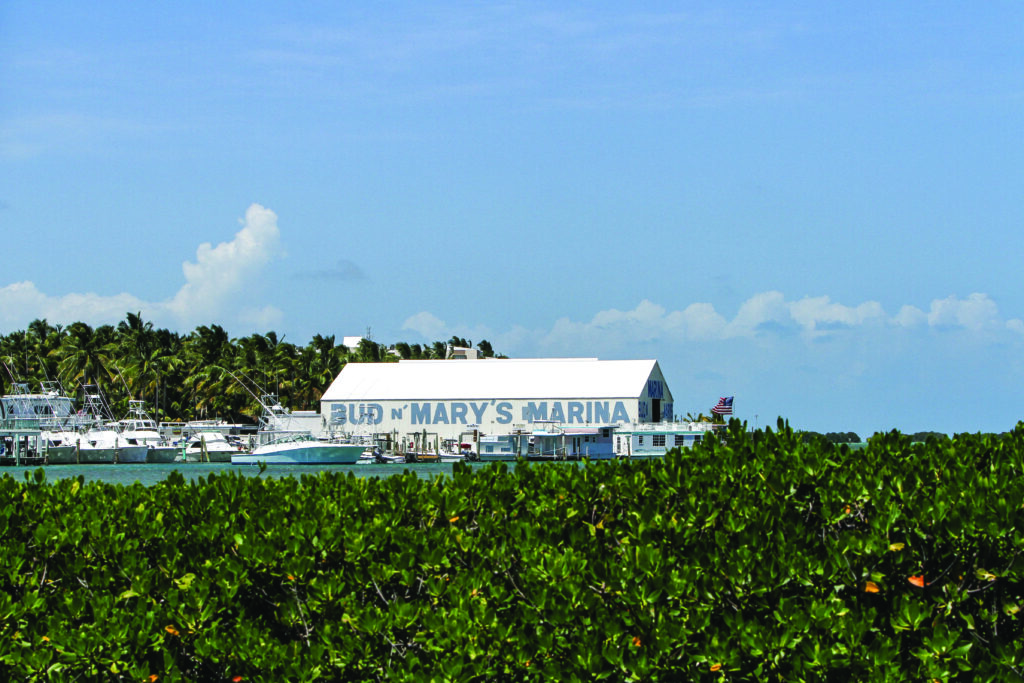
Bermuda
A hook-shaped island approximately 650 miles east of Cape Hatteras, Bermuda truly is the land of giants. Grander blue marlin swing through these waters every summer and those willing to make the long transit have a good chance of catching that fish of a lifetime every day they are on the water. Dan Jacobs, tournament director for the Bermuda Big Game Classic and Bermuda Triple Crown Tournament
Series, has seen some amazing fishing over the last 20-plus years.
“Bermuda’s main billfish season extends from June to August, with July being the most consistent. But you can encounter a blue or white marlin from May through October. Bermuda also has one of the best wahoo fisheries in the spring and fall, with lots of tuna in the mix,” says Jacobs. Bermuda’s blue marlin record is 1,325 pounds, and the two biggest fish ever caught in the winner-take-all Blue Marlin World Cup were captured in Bermuda — a 1,195-pound behemoth caught by Capt. Alan Card and 1,189-pounder caught by Capt. Andrew Dias.
“With today’s modern vessels and satellite-based weather services the crossing has never been safer,” continued Jacobs. “We see boats make the trip as early as May, with the bulk of the fleet arriving in June to prepare for the Triple Crown, which is held during the first three weeks in July. Morehead City, North Carolina, and Marsh Harbour in the Bahamas are the two main launching points,” he says. After clearing at St. George’s, most visiting boats head to Hamilton and the Princess Marina (thehamiltonprincess.com) or Royal Bermuda Yacht Club.
Chub Cay, Bahamas
Just 125 miles from South Florida, Chub Cay Resort & Marina lies at the southernmost tip of the Berry Islands in the Bahamas, just 35 miles northwest of Nassau. Bordered by Morgan’s Bluff at the northeast tip of Andros and the Northwest Channel Light on the eastern edge of the Great Bahama Bank, the Pocket is home to aggressive bottom topography with near vertical edges and lights up from February through May when swarms of hungry blues, whites and sails visit these fertile waters.
With a fabled history of iconic catches, the operation was forced to shut down in the summer of 2005 after a series of tropical lashings. Like many high-class resorts in the Bahamas, Chub went through a painful period of economic downfall, but new ownership has the island back better than ever with a full-service hotel, villas, restaurant, indoor and outdoor bars and an infinity pool overlooking the beach. The grounds are immaculate, and the state-of-the-art concrete floating docks with newly renovated 109 slip marina can accommodate vessels up to 190 feet. The centerpiece of the marina, and symbol of the island’s history as an angler’s paradise, is an 18-foot, 3,000-pound bronze sculpture of a blue marlin by Kent Ullberg.
Offshore Fishing Destination Testimonial
Tony Huerta, owner of the 58-foot Paul Mann, LoQueSea, got his first taste of Chub’s great fishing this past March before taking home Top Release Boat in the Big Rock. “The fishing was awesome for us. We were coming in with six or seven flags each day,” he says. “One day we had a slam, with three whites a blue and sail. Another day we caught two blues and five sails, and several days we tallied a blue and four or five sails. What’s special about Chub is that it can be blowing 20 knots, but there will only be two-foot seas in the Pocket. It’s a little pricey, about $350 a night for a 58-footer, but the personnel and dockmaster were all very friendly. The fact that you set out your spread as soon as you clear the marina goes a long way for me,” Huerta says.
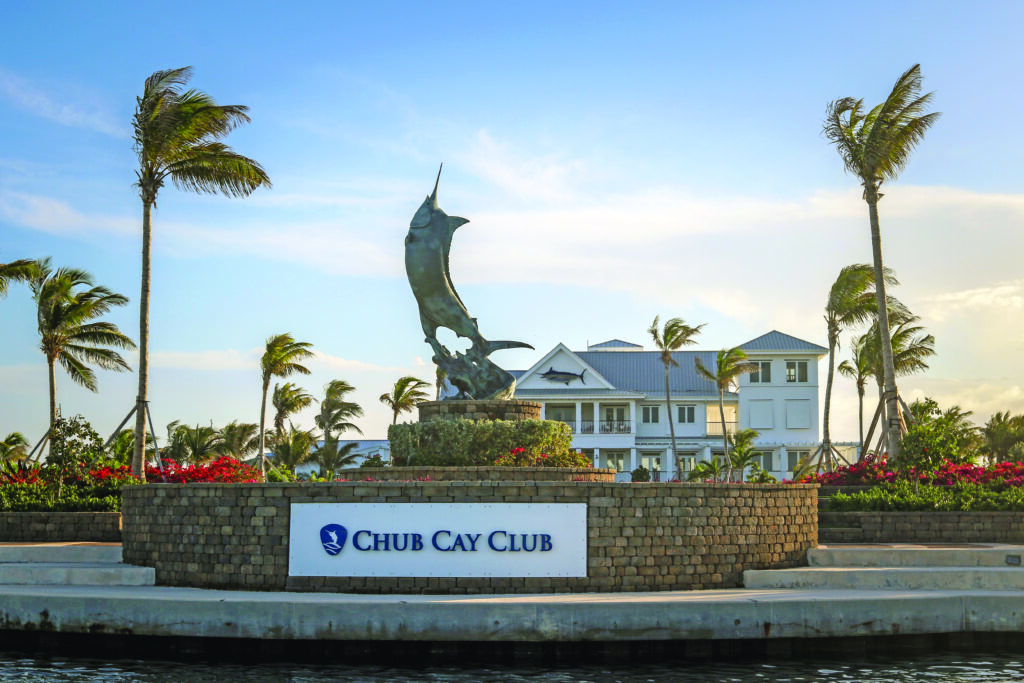
The Dominican Republic
Over the last 10 years or so, the Dominican Republic has made quite a splash in the big game fishing pool. Most of us started to get a whiff of the great fishing there after hearing from the Puerto Rican boats and crews that would make the hop across the Mona Passage to vacation and fish in the beautiful, prolific waters. Capt. Tim Richardson on Tradition was so impressed with the fishing that he moved part of his world-ranging charter operation to the DR over eight years ago.
“I spend five or six months a year in the Dominican,” he says, “and this year, we are planning on going back for the September-December marlin bite off Cap Cana if coronavirus cooperates.”
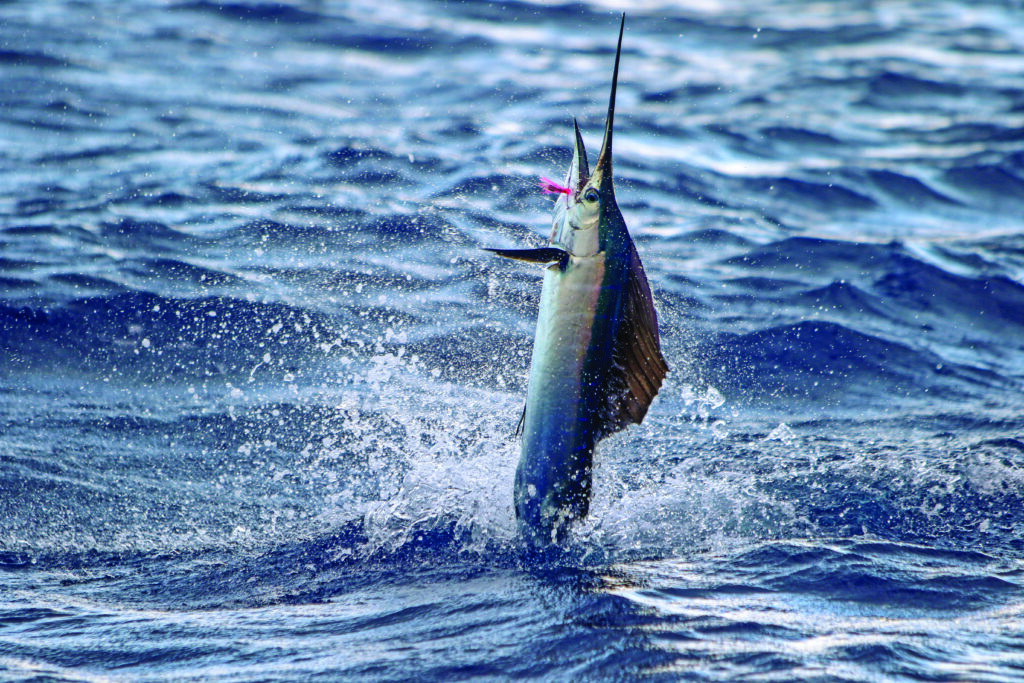
Marina Cap Cana
Just 10 minutes from the Punta Cana International Airport, Marina Cap Cana is part of an exclusive gated community surrounded by an enchanting village with gourmet restaurants and elegant boutique hotels. The protected marina provides more than 130 slips, with complete services for captains and crew. Richardson tells us that one of the great things about the Dominican Republic is that it’s easily accessible from the states. “It’s not on the other side of the world. You can get there in 2 ½ hours from Miami, so it’s only a half day spent traveling. It’s also not a bad trip by boat — about 900 miles from Palm Beach,” he says. “There’s also really consistent FAD fishing for blue marlin off Casa de Campo from February through April. You only have to run about 20 miles to the FADs, and we typically see anywhere from four to ten blues a day.”
Home to one of the most prestigious marinas in the entire Caribbean, three Pete Dye golf courses, seven outstanding restaurants, an equestrian center, shooting course, shopping and white sand beaches, it’s no surprise Casa De Campo is a favorite luxury destination for discerning travelers and celebrities the world over.

7,000-acre complex where the Chavón River meets the Caribbean Sea.
St. Thomas, U.S. Virgin Islands
Before the record-breaking seasons in Cape Verde or the FAD fishery was developed off Costa Rica, St. Thomas stood alone as the best place in the world to catch a blue marlin. The famed North Drop, a massive trench that stretches from Puerto Rico to the British Virgin Islands and beyond, creates a massive upwelling that fuels a spectacular bite every summer. I often tell people that if they really want to catch a blue marlin, fish the four days before the full moon from June-October.
Blue marlin aside, St. Thomas is steeped in sport fishing history and tradition. Most, if not all, of the past marlin greats spent at least one season at American Yacht Harbor in Red Hook and the boats and crews on the famed A-dock represented some of the finest blue marlin fishermen to ever walk the planet … guys like Capt. Mike Lemon, Capt. Red Bailey and Capt. Randy Jendersee that really pioneered the sport.
“St. Thomas is still my favorite. I started coming down here in 1986, and I’ve been here over 20 seasons. What’s unique is that the fish are very aggressive here. I’ve had them peel off 200 yards, spit the hook and come back to eat again. Anyone who’s fished here knows what it’s all about,” says Jendersee. Today, St. Thomas draws less attention than more trendy and exotic destinations and many captains and owners have since almost forgotten about the long run to the U.S. Virgin Islands. Big fish still show up every summer and those in the know continue to make the pilgrimage to American Yacht Harbor for frenzied billfish encounters along the famed North Drop.
Quepos, Costa Rica
The sport fishing world got its first glimpse of the incredible fishing Costa Rica had to offer from charter operations in Flamingo and Tamarindo. Then, Los Sueños burst onto the scene in the late 90s, and most other destinations along the rich Costa Rican coastline were relegated to the back burner. Quepos, however, stepped up to the forefront with the completion of Marina Pez Vela in 2007. The sheltered basin features 194 slips and can accommodate vessels from 35 to 200 feet.
There’s even a first-rate yacht yard complete with 200-ton marine lift for easy haul outs. Scott Cutter, sales director at Marina Pez Vela, says that boaters can expect top-notch amenities as well as complete security during their stay.
“We have concrete floating docks with fiber optic cables available at each slip. You can access cable TV, internet and much more. There are also high-speed fuel capabilities. We take the well-being of our boats and clients very seriously, but still offer a pretty laid-back vibe. You get all the high-end services, but there’s more Pura Vida in the atmosphere here. A leader in adventure and ecotourism, Costa Rica is one of the most biologically diverse destinations on the planet. Not only is it accessible, beautiful and safe, but more than a quarter of the country’s land has been protected to ensure the preservation of the nation’s abundant natural resources. And if you hadn’t heard yet, calm seas and numerous sailfish, marlin and tuna make Costa Rica one of the best destinations for traveling anglers with unlimited flexibility.”
Piñas Bay, Panama
Any boat that’s made the journey to Costa Rica and the Pacific Ocean through the Panama Canal should make it a point to visit Piñas Bay, Panama. It has been attracting anglers since Zane Grey visited under sail power in the 1920s. Home to the iconic Tropic Star Lodge, it’s arguable that Piñas Bay represents an angler’s best chance of catching a black marlin in the Northern Hemisphere. The dense Darien jungle stretches down to the rocky shore creating breathtaking, primordial scenery amid such legendary waters. But billfish aren’t the only attraction and visiting anglers revel in the excellent opportunities with unique inshore targets like roosterfish, cubera snapper and bluefin trevally.
Former owner Terri Andrews, now an ambassador of Tropic Star Lodge, says that when the operation was smaller it was difficult to host visiting game boats due to space restrictions in the dining room and bar. “We had to cap it at a dozen people at any one time because we had to still be able to accommodate all of our lodge guests,” he says. “We would have to do a barbecue outside for the visiting boats. Now, we have plenty of room. There’s a bar on the water’s edge, and the new owners have expanded the dining room and given the old bar its own entrance. The pool bar is still a favorite, and the new premium villas excite the most discerning clientele.”
For The Trip Of A Lifetime
Among the notable improvements to the lodge infrastructure and fleet of Bertrams, there’s a new program in the works allowing registered private boats to reserve and purchase fuel, meals and accommodation at the lodge. For vessels that desire to stay longer than seven days, Tropic Star can also source provisions from Panama City. While there’s no bad time to fish in Piñas Bay, the lodge is closed from October through mid-November for maintenance in preparation of the upcoming black marlin season that typically peaks around the January full moon. For adventurous anglers seeking the trip of a lifetime, this is it!
Don’t Forget to Check Out Our Sportfishing Job Board! Did You Know? It’s the perfect platform for seeking skilled captains and mates. Whether you’re on the hunt for your dream team or looking to join one, your next big adventure begins here. Explore the opportunities now! Click Here
Dive Deeper into the World of Sportfishing
Unlock Exclusive Savings: Enjoy 50% Off Your Subscription!
Are you ready to explore the thrilling world of sportfishing from the comfort of your home? Subscribe now and embark on a journey filled with captivating stories, expert insights, and insider tips. Choose between our digital or print edition and secure an incredible 50% discount on your subscription.
Subscribe today and get ready for an adventure like no other. Click here to subscribe and elevate your sportfishing experience with InTheBite Sportfishing Magazine.












